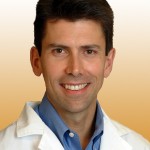Widgetized Section
Go to Admin » Appearance » Widgets » and move Gabfire Widget: Social into that MastheadOverlay zone
Ask a Sports Medicine Doc: The older athlete
Q: How important is exercise for remaining healthy as we age?
A: There is a very gradual decline in human organ system performance as we age. In the musculoskeletal system, we slowly lose bone density, muscle strength and flexibility slowly decreases, ligaments and tendons become stiffer and more prone to tear, and articular cartilage thins resulting in osteoarthritis. Aging is also associated with increased rates of obesity, type II diabetes, and heart disease.
In most parts of the US, older adults are the least active age group. However, here in the Colorado Rockies, older athletes continue to inspire all of us by out-competing many younger athletes and performing at a high level late into life. Continued physical activity in one’s older years can slow or even prevent the development of numerous disease processes so I highly encourage that you stay active as you age.
Older athletes are now participating in record numbers in triathlons, marathons, and other endurance sports events. At the Ironman triathlon distance event, the number of finishers over the age of 40 has increased from 25% to 50% over the last 25 years. Currently, almost half of all marathon participants in the US are over the age of 40. Performance in Ironman length triathlons and marathons also continues to improve. Over the last 25 years, athletes over the age of 45 have improved their times at Ironman length triathlons by an average of 8% per year. 25% of marathon runners in their 60’s outperform half of the runners aged 20-54. Furthermore, these older athletes have not yet reached their performance limits.
As for bone, we all gradually lose bone mineral density as we age. On average, men lose 0.5-0.75% of their bone density each year beyond the age of 40 whereas women lose on average 1.5-2.0% of their bone density each year prior to menopause and up to 3% yearly after menopause. However, in one study, masters sprinters (ages 40-85) maintained their bone density and bone strength despite their older age. Impact exercise can effectively prevent typical age related bone loss. Even modest activities such as walking can slow losses of bone mineral density.
As for muscle strength, we all gradually lose Type I and Type II muscle fibers, which leads to diminished muscle mass and strength. Muscles also get stiffer as we age and being less elastic, they can more easily tear. However, one study found that recreational athletes aged 40-80 who remain highly active, training 4-5 days per week, exhibited no significant loss of thigh muscle girth and strength. To maintain muscle function, doing regular resistance training is critical. Endurance training is helpful to prevent muscle losses, but resistance training is the most effective way to induce muscle hypertrophy or muscle growth.
As for cartilage loss and arthritis, in one study, older athletes who participate in regular physical activity such as skiing, cycling, or jogging lost less cartilage over time than older adults that did not participate in such activities. Another study showed that older athletes who increased their quadriceps muscle area by starting resistance training tended to better maintain the cartilage on the underside of their knee cap. Other studies confirm that moderate and even high intensity exercise regiments that load the knee and strengthen the quadriceps and muscles that support the knee can significantly slow the age related loss of articular cartilage and prevent osteoarthritis.
Like the American College of Sports Medicine, I recommend all adults do a combination of endurance, resistance, flexibility and balance training exercises. Here in the mountains, I find that some older athletes may be accomplished in one of these areas, but are ignoring these other areas of fitness.
In summary, although there is an inevitable decline in organ system function as we age, continuing to be active as we age can certainly slow the loss of functional capacity and can also help delay or avoid the onset of medical problems that can accelerate the aging process.
Dr. Rick Cunningham is a Knee and Shoulder Sports Medicine Specialist with Vail-Summit Orthopaedics. He is a Physician for the US Ski Team and Chief of Surgery at Vail Valley Medical Center. Do you have a sports medicine question you’d like him to answer in this column? Visit his website at www.vailknee.com to submit your topic idea. For more information about Vail-Summit Orthopaedics, visit www.vsortho.com.
Latest posts by Dr. Rick Cunningham (see all)
- Dr. Rick Cunningham: Save your ACL - January 7, 2018
- Ask a Sports Medicine Doc: MOON study on ACL reconstruction - March 20, 2015
- Ask a Sports Medicine Doc: Calcific tendonitis of the rotator cuff - December 3, 2014



